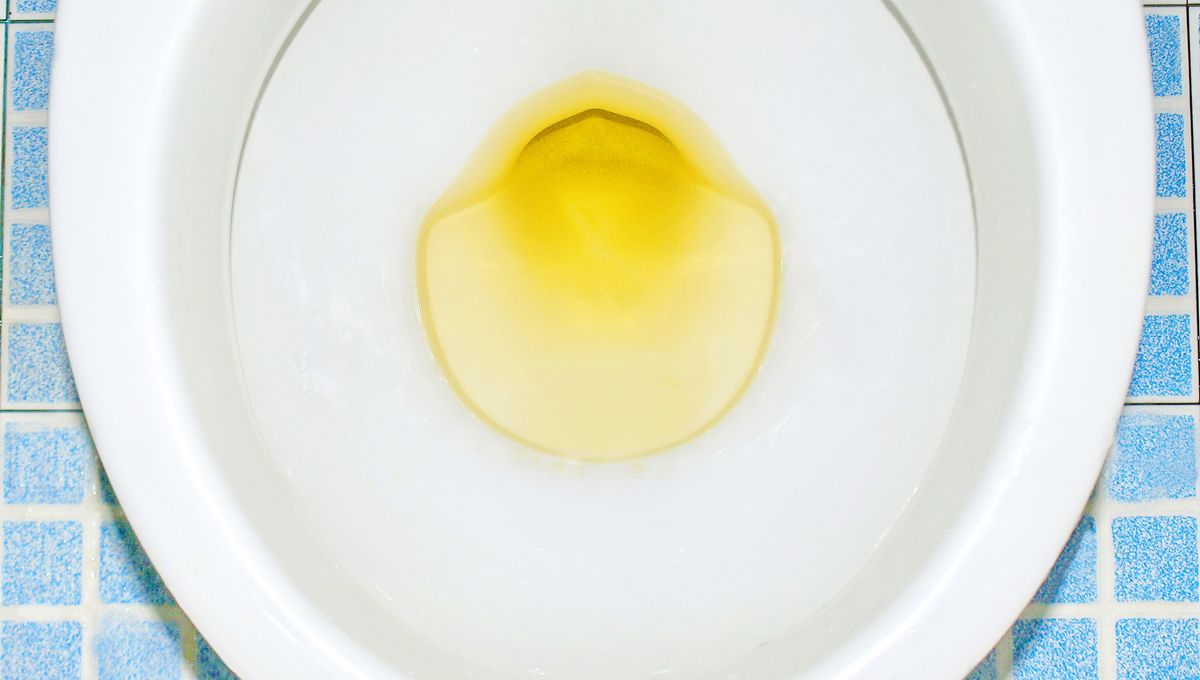
We’re often told to pay attention to the color of our urine as an indicator of factors like dehydration – but as you gaze into the toilet bowl, have you ever wondered how exactly pee gets its yellow color? A recent study has answered that long-standing question, pointing to a newly discovered enzyme produced by gut bacteria.
The process centers on how a compound called bilirubin (an orangey pigment produced when hemoglobin is broken down at the end of red blood cells’ 120-day lifespan) is metabolized. Bilirubin is either broken down or reabsorbed in the gut, where it is secreted via bile. For over 125 years, we’ve known that a product of this breakdown called urobilin is what makes pee yellow – but the enzyme responsible for its production, which the team behind the study has named bilirubin reductase (BilR), has only now been revealed.
“Gut microbes encode the enzyme bilirubin reductase that converts bilirubin into a colorless byproduct called urobilinogen,” lead author of the study Brantley Hall, assistant professor in the University of Maryland’s Department of Cell Biology and Molecular Genetics, explained in a statement. “Urobilinogen then spontaneously degrades into a molecule called urobilin, which is responsible for the yellow color we are all familiar with.”
The team examined different species of bacteria from the human gut microbiome. They found nine strains capable of reducing (aka giving electrons) to bilirubin, converting it to urobilinogen, and 13 that were not. Examining the genomes of strains that showed this capability and comparing them to the genomes of strains that didn’t, they narrowed down sets of genes to one that was “homologous to 2,4-dienoyl-CoA reductase (EC: 1.3.1.34), an oxidoreductase that reduces carbon–carbon double bonds, similar to the expected bilirubin reduction reaction.”
The researchers then made E. coli express genes coding for bilirubin reductase, giving it the ability to reduce bilirubin, whereas E. coli which was not made to produce the enzyme did not reduce bilirubin. They also showed evidence that residues of the amino acids arginine and aspartic acid in the active site of bilirubin reductase are key to the enzyme’s reduction of bilirubin, as mutating these residues significantly lowered the enzyme’s activity.
It was also found that this enzyme is mostly produced by bacteria in the phylum Firmicutes, which are common in the human gut. They also note in the paper that “Some bilR genes were found in bacteria from the Flavobacteriales, which are typically found in aquatic and soil environments, suggesting a possible role for bilirubin reductase in breaking down bilirubin or similar metabolites in other environments.”
Upon analyzing human gut metagenomes (an analysis of the sequence of all the organisms in a sample) for bilirubin reductase, the team found some interesting information. They found that the enzyme is often missing in infants up until the end of their first year of life. This period of absence coincides with the period where neonatal jaundice risk is highest, which is relevant as jaundice is caused by bilirubin building up in the blood. They also found that the enzyme was missing in significantly more people with ulcerative colitis or Crohn’s compared to those without these conditions.
“Now that we’ve identified this enzyme, we can start investigating how the bacteria in our gut impact circulating bilirubin levels and related health conditions like jaundice,” said Xiaofang Jiang, study co-author and NIH Investigator. “This discovery lays the foundation for understanding the gut-liver axis.”
“It’s remarkable that an everyday biological phenomenon went unexplained for so long, and our team is excited to be able to explain it,” Hall said.
The study is published in the journal Nature Microbiology.
Source Link: Why Is Pee Yellow? Thank Your Gut Bacteria